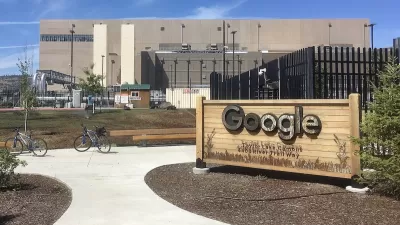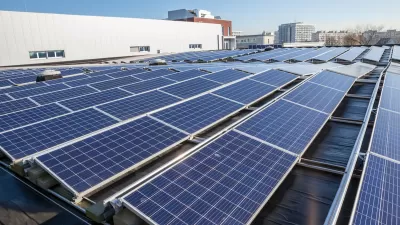One important planning approach for sustainable living is how to locate and integrate the natural and man-made attributes of the land to configure a low-carbon site for large scale development.
One important planning approach for sustainable living is how to locate and integrate the natural and man-made attributes of the land to configure a low-carbon site for large scale development. Steven Kellenberg's, Urban Land Green article, "Ten Keys to a Low-Carbon Community", http://www.uli.org/ResearchAndPublications/Magazines/UrbanLandGreen.aspx offers an excellent primer on the symbiotic relationship between a variety of planning and design principles that provide measurable solutions for sustainable growth.
Land planners continue to deepened the analytical process of qualifying low-carbon sites through an integrated strategy for sustainable site development called Potential Energy & Renewable Resource Mapping, or PERRM.
PERRM assists property owners identify and document the inherent surface and subsurface resources available on their land to create synergy and an energy efficient infrastructure between the natural and man-made environment to provide an affordable strategy for low carbon development. The goal is to save energy costs for the property owner, the inhabitants and the planet by lowering greenhouse gas emissions and promoting a carbon neutral environment. The objectives are to leverage financial incentives, create steady, ancillary revenue sources and foster entrepreneurial cooperation based on a framework of low carbon development and energy efficiency.
In the past developers often ignored potential energy & renewable resources or left them independent. The data collected by civil and geotechnical engineers was primarily used to identify build /no build areas or close gaps in the traditional infrastructure owned by public utilities. Today, property owners have found PERRM to be valuable for establishing energy usage and efficiency criteria required to for new community development, renewable energy tax credits, revenue negotiations, formation of municipal utility districts, lease strategies, partnering with emerging technology companies, energy legislation and jurisdictional approvals and new federal and state incentive programs,. Also, PERRM is useful to communicate the ‘uniqueness of the land' as a branding opportunity, since the process and results are inherently interesting to the public.
PERRM identifies and explores the potential for integrated strategies between crude oil, natural gas, landfill, wastewater treatment, hydro, solar, wind, geothermal, water wells, rain harvesting, conventional power grids CH&P, desalinization, biomass agriculture, bioremediation and potential for loop optimization to fulfill a variety of outcomes. For instance, a slope analysis study, often used only to identify buildable areas are being reexamined using PERRM as locations for thermal radiation collection based on solar and surface geothermal (GHPs) potential.
PERRM may not make sense everywhere. Scale is important and large properties benefit. Some of the overlapping tasks that need to be performed in a PERRM study include:
- Preparation of a 1:1000 base map and aerial photo by civil & geotechnical experts.
- Agree on the purpose and goals for the PERRM.
- Complete the PERRM Energy Questionnaire
- Compile a first-level PERRM based on local knowledge of existing conditions.
- Locate available public and private data such as specific plan documents and internal technical reports. Plot all relevant information on the first-level map (wastewater and soils, etc).
- Overlay initial PERRM results to determine opportunity and constraints.
- Evaluate overall energy requirements for the property.Develop second and third-level PERRM criteria for collecting data on solar, thermal heat, wind studies, etc.
- Begin informational meetings with companies that have products and services that rely on renewable resources. Build consensus on overall community energy infrastructure planning, micro grids, SMART Home technology, timing and costs.
- Begin jurisdictional meetings with state and federal agencies regarding tax credit, application requirements, expediting, costs and public relations.
- Prepare a cost benefit analysis and infrastructure savings report for negotiations during land sales.
PERRM has resulted in a several low carbon development criteria that property owners once thought were unattainable. First, striving for 80% of peak energy demand with renewable resources is realistic. Second, developers should keep the carbon reduction credits in anticipation of a future cap and trade strategy being initiated by the US government. Finally, while mineral rights are important - so are air rights. Developers should keep the air gap rights above the roof lines on all new structures for future renewable potential which they can use or sell.
PERRM studies ultimately leads to a myriad of new questions and scenarios that need to be solved on a case by case basis. The methodology also involves engaging new disciplines and energy experts to cooperate on this breakthrough process. PERRM creates a new value proposition from how land planning and development has been approached before in order to create a low carbon environment to help us all.

Alabama: Trump Terminates Settlements for Black Communities Harmed By Raw Sewage
Trump deemed the landmark civil rights agreement “illegal DEI and environmental justice policy.”

Study: Maui’s Plan to Convert Vacation Rentals to Long-Term Housing Could Cause Nearly $1 Billion Economic Loss
The plan would reduce visitor accommodation by 25% resulting in 1,900 jobs lost.

Planetizen Federal Action Tracker
A weekly monitor of how Trump’s orders and actions are impacting planners and planning in America.

Wind Energy on the Rise Despite Federal Policy Reversal
The Trump administration is revoking federal support for renewable energy, but demand for new projects continues unabated.

Passengers Flock to Caltrain After Electrification
The new electric trains are running faster and more reliably, leading to strong ridership growth on the Bay Area rail system.

Texas Churches Rally Behind ‘Yes in God’s Back Yard’ Legislation
Religious leaders want the state to reduce zoning regulations to streamline leasing church-owned land to housing developers.
Urban Design for Planners 1: Software Tools
This six-course series explores essential urban design concepts using open source software and equips planners with the tools they need to participate fully in the urban design process.
Planning for Universal Design
Learn the tools for implementing Universal Design in planning regulations.
Caltrans
Smith Gee Studio
Institute for Housing and Urban Development Studies (IHS)
City of Grandview
Harvard GSD Executive Education
Toledo-Lucas County Plan Commissions
Salt Lake City
NYU Wagner Graduate School of Public Service





























